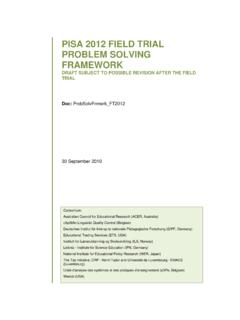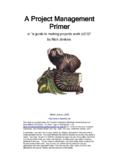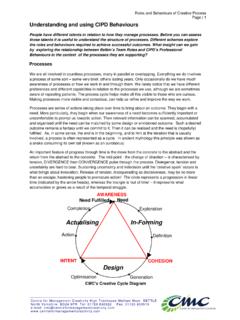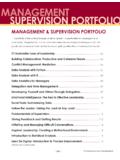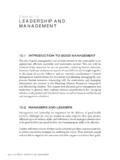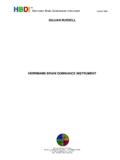Transcription of Critical Thinking Our Customization Benefits for ...
1 HeadScratchers, LLC Critical Thinking for problem solving and Decision Making 1 Critical Thinking is a method of analyzing and looking at problems, decisions, and goals. This results in faster decisions, more creative and innovative solutions, and higher quality deliverables. Critical Thinking has an immediate positive impact for solving current problems, and has significant long term Benefits with business issues, goals, and strategies. Imagine the Benefits when people are Thinking at a new level.
2 This customized interactive one day workshop provides attendees with an excellent foundation framework and set of pragmatic tools and techniques for Critical Thinking in a variety of situations. The participants practice these tools in exercise sessions using a real individual business issue. Templates, called Thinksheets, are used as a guide for Thinking , both in the class, and to aid future out of class use. Our Customization While Critical Thinking isn t difficult, the learning is most effective when tailored and practiced within a familiar area of focus and real world situation.
3 Prior to the workshop, we meet with some of the attendees to obtain an understanding of the work they do and specific objectives and challenges they have. With this, we create relevant examples and exercises for the workshop. Using their issues and challenges, as well as the functional areas focus and seniority of the attendees, we customize: The appropriate techniques and content most effective for the attendees The examples and break-out exercises used in the workshop Benefits for Participants of this workshop Clarity of thought for understanding a problem and situation Superior and innovative ideas and solutions to problems, goals.
4 And strategies Faster and higher quality decisions that are more impactful Better understanding of the dynamics between different aspects of a business or project Higher productivity and quality Better prepared to tackle difficult problems and make decisions on a daily basis Examples of where these skills can be applied include: Improved processes and quality General problem solving and decision making New product ideas and creation Short and long term business strategies Crisis management Improved operational efficiency Revenue generation and cost reduction strategies Customer care improvement Not your average Class or Seminar!
5 Unlike most classes that are taught in academia style and content, our workshop is about applying Critical Thinking tools and techniques in the real world on your actual business problems. Tools and Techniques are taught, and then practiced in class, on the problems you bring. Then, when you return to the workplace, you already know how to apply what you just learned. HeadScratchers, LLC Critical Thinking for problem solving and Decision Making 2 Overview: This one day workshop provides attendees with an excellent foundation and set of tools and techniques for Critical Thinking in a variety of situations.
6 The participants practice these tools in exercise sessions using their real individual business issues. Templates, called Thinksheets, are used as a guide for Thinking , both in the class, and to aid future out of class use. Prior to the class we will interview some of the attendees so that we can customize the workshop, not only with relevant examples and exercises, but so we can adjust the content focus to meet the objectives of the workshop organizers. Learning Objectives: After completing this course, you will be able to: Distinguish Automatic Thinking from Manual Understand a Framework for Thinking Critically and apply the 3 step Critical Thinking Process Learn and practice a variety of tools to think critically including the use of Thinksheets to.
7 O Get Clear on a problem , Situation or Goal o Guide your Thinking for Conclusions o Guide your Thinking for Decisions Leave the day knowing how to ask questions to get yourself and others to think critically Identify where you can apply Critical Thinking in your job and create a next steps plan Course Outline: We focus on the 3 major components of Critical Thinking related to problem solving and decision making (also see diagrams in this document). These are: Clarity of issue, problem , or decision. The most important step in Critical Thinking .
8 Conclusions 99% of conclusions are Inductive reasoning. This includes; Facts, Observations, Experiences, Beliefs, Assumptions. We show how these components form conclusions. Decisions Attendees learn that the decision process is very different than reaching a conclusion and that quality decisions require two elements to be present. Topics Covered: Distinguishing Automatic Thinking from Manual Thinking Benefits of Critical Thinking Empty your bucket Clarity - Get Clear on a problem to solve or decision to make, and the Clarity Thinksheet o Inspecting the problem statement o The tools of Socratic Questioning; Why, So What o Need vs.
9 Want o A Family of HeadScratchers Introducing Being a Thinking Coach Conclusions - Create Solutions and the Conclusion Thinksheet o Applying Inductive & Deductive Thinking . o How facts, observations, experiences, beliefs and assumptions affect your Thinking o Why people come to different conclusions and what to do about it. o Using Critical Thinking to Influence and Persuade Decisions - Taking action and the Decision Thinksheet o The Elements of Decision; Who, When and Criteria o Upsides and Downsides Next Steps - Your plan to implement your learning (for yourself and your team) HeadScratchers, LLC Critical Thinking for problem solving and Decision Making 3 We present a framework for Critical Thinking We contrast your everyday automatic Thinking with Critical Thinking .
10 HeadScratchers, LLC Critical Thinking for problem solving and Decision Making 4 We educate the attendees to use a variety of techniques for getting Clear, reaching Conclusions and making Decisions This Results inTools & Techniques Clarity Decisions Conclusions Facts Observations Experiences Beliefs Assumptions Need Criteria Empty Bucket Inspection Why? So What? Need Socratic Questioning Listening to the Answer Broader /Subordinate Focus Everyone Aligned Time and Money spent on the right problem People working on the right problem or decision Clarity Thoughtful, Defendable and Clear Conclusions New Ideas Conclusions Faster and Quality Decision Making Less iterations and redo s Alignment Decisions HeadScratchers.

